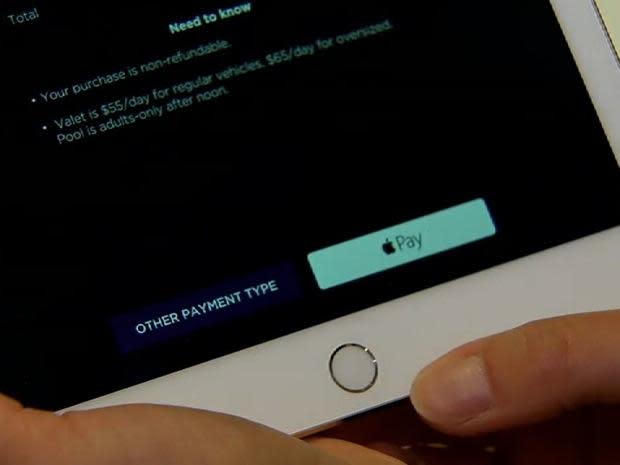Apple Pay rollouts continue, stores seeing growth in mobile transactions

This Thursday will mark the one-month anniversary of the launch of Apple Pay, the new mobile payment solution from Apple. Though only a fraction of US retailers support the new platform, there are a number of major names signed on, including drugstore chain Walgreens, McDonalds, and Whole Foods.
New retailers have also signed on recently, including office supply giant Staples, southern grocery chain Winn-Dixie, and New England-based convenience store chain Cumberland Farms.
A recent report from The New York Times shed some light on what retailers are seeing from customers.
Walgreens says its mobile wallet payments have doubled since Apple Pay came out, without specifying exact payment numbers. Mobile payments previously were limited to Android-only solutions like Google Wallet and carrier-based payment solutions. Neither have shown a tremendous amount of interest from consumers, but that could be changing.
Apple Pay is driving awareness of mobile payments among the general public, meaning even non-Apple users are more likely to use the near-field communication (NFC) technologies that Apple is using. The CEO of Softcard, a mobile payments company backed by AT&T, T-Mobile, and Verizon, told The New York Times that Apple Pay was "a huge tailwind" or driving force for his company.
Softcard said that its app had been downloaded by more customers following the well-publicized launch of Apple Pay, and it was being used more often by existing customers.
McDonald's says Apple Pay now accounts for 50% of its tap-to-pay transactions, and Whole Foods says Apple Pay has been used in more than 150,000 transactions in less than three weeks. However, Toys R Us said that relatively few payments were being made because the technology was so new.
A number of new banks have added support as well, including Regions, Barclaycard, U.S. Trust, and more. Apple maintains a full list of supported banks on its website.
I've used Apple Pay a handful of times, and, for the most part, it was quick and painless. I did run into trouble at a RiteAid, which is one of the companies that has disabled its NFC payments acceptance, even though its registers are physically capable of accepting Apple Pay. However, there was no sign that said the payment couldn't go through -- it just beeped and then didn't work.
Once NFC payments (and thus Apple Pay) are available in more quick-shopping locations like gas pumps, it'll really take off, and customers will begin to use it even more. Then, in early 2015, when the Apple Watch launches, it'll be even easier to use Apple Pay, because it'll be right on users' wrists.
More data from retailers should be forthcoming in the next few months, as they tout their successes and failures. Hopefully, we'll see the first numbers from Apple in its holiday quarter earnings call sometime in January.
Have you used Apple Pay or other NFC payment solutions? How did it go? Let us know in the comments below.


